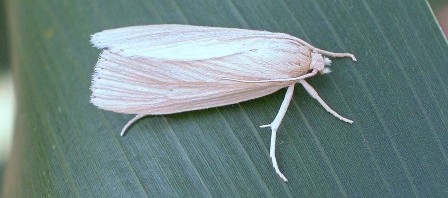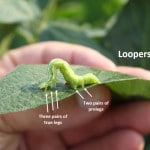This is an update of an article from last year as a reminder about managing kudzu bug infestations in soybean.
Category Archives: Soybean

Moth traps and southwestern corn borers
As always, moth trapping data for the season can be found on the quick links menu (http://www.utcrops.com/BlogStuff/2017MothTrappingData.pdf). We are now catching a few more corn earworm (bollworm) moths, but nothing too startling. However, it is clear that the second generation moth flight for southwestern corn borer is underway, and we will catch even more moths next week. Keep in mind that there is a lot of variation among locations. It can be a waste of money to treat for southwestern corn borers based on trap catches that are not near your fields. You should be running a few Continue reading
Kudzu Bug Migration into Soybean
I’ve been watching kudzu bug populations on kudzu, and I am now seeing late-instar immature stages and next-generation adults. This means we will start seeing adults migrating into some soybean fields. With the mild winter and early spring, this migration will be sooner than we’ve seen in the past. We might have expected it to be larger also, but populations on kudzu do not seem especially high. A fungus (Beauveria bassiana) has helped considerably at reducing populations of kudzu bug , and I’m hoping we again see the benefits this year. You will notice a fuzzy white fungus growing on dead nymphs and adults when they are filled by Beauveria. Continue reading
2017 Soybean Scout Schools in July (Final Details)

The 2017 Soybean Scout Schools have been scheduled for three locations. Scout schools are sponsored by the Tennessee Promotion Board. They typically last 2-2.5 hours and provide hands-on training on the basics of soybean growth and the scouting and management of weeds, insects, and diseases. Participants will receive a scouting notebook and complimentary sweep net while supplies last. Pesticide recertification points and CCA CEU points are offered. See below for details, and updates and reminders will be posted in future articles. Continue reading
Fall Armyworms Look to Make and Early Start (again)
It seems that fall armyworms have gotten a running start in recent years. This species does not overwinter in Tennessee, but it may survive warm winters in the extreme southern areas of coastal states during mild winters. It migrates into Tennessee each year. Often, fall armyworms don’t show in substantial numbers until late July or August. However, they are being found Continue reading
Threecornered Alfalfa Hoppers in Soybean
Although not a major pest, the threecornered alfalfa hopper (TCAH) causes occasional damage by girdling the main stems of seedling plants (typically those < 10 inches tall). They will feed around the perimeter of the stem with their beak, eventually creating a swollen callus. By itself, this injury does not affect yield, but Continue reading
Fire Ant Mounds in Soybean Fields
Please see the update at the bottom of this article …
Every so often, I get questions about reducing fire ant mounds in reduced-tillage soybean fields, particularly from the southern counties of the state where this occurs most commonly. Fire ants enjoyed our mild winter, so I have had a couple of questions already. This insect causes problems during harvest when Continue reading
Don’t freak out about Japanese beetles
They’re back, but they don’t scare me! It is very unusual to see economic damage from Japanese beetles in cotton, soybean, or corn. They may cause defoliation in all crops. I’ve never seen enough defoliation in cotton or corn to justify treatment. On a few occasions, I’ve seen enough defoliation in soybean to catch my attention. They will hang around for a while, so in combination with other defoliators, they may cause enough damage Continue reading

